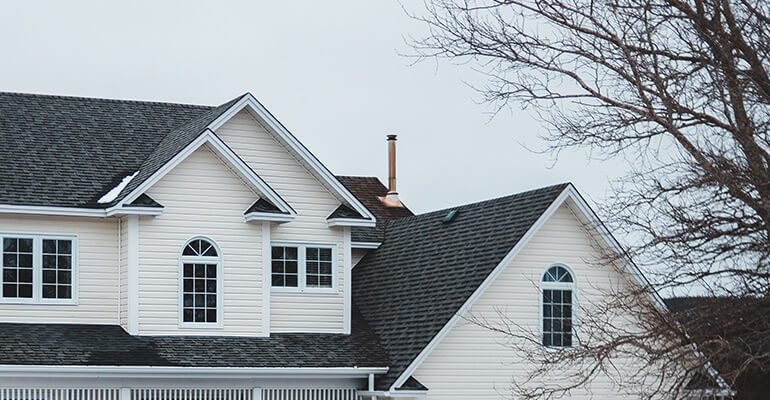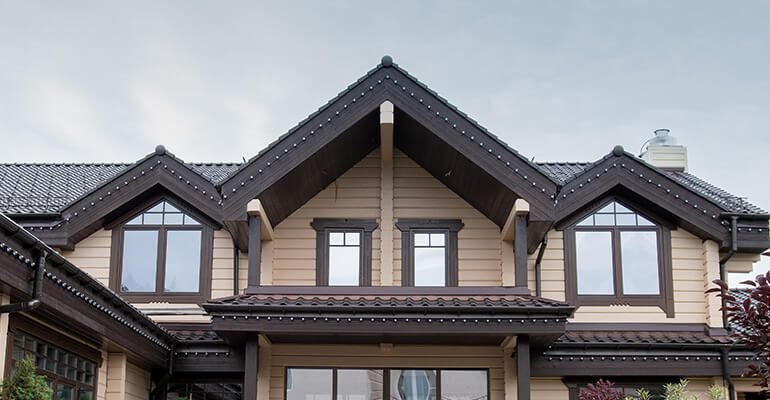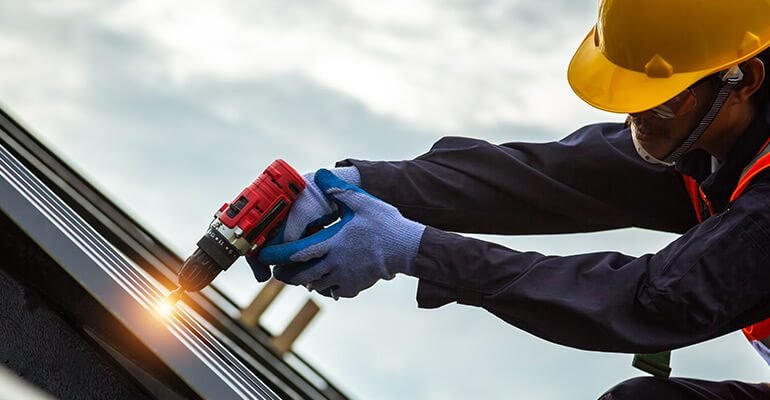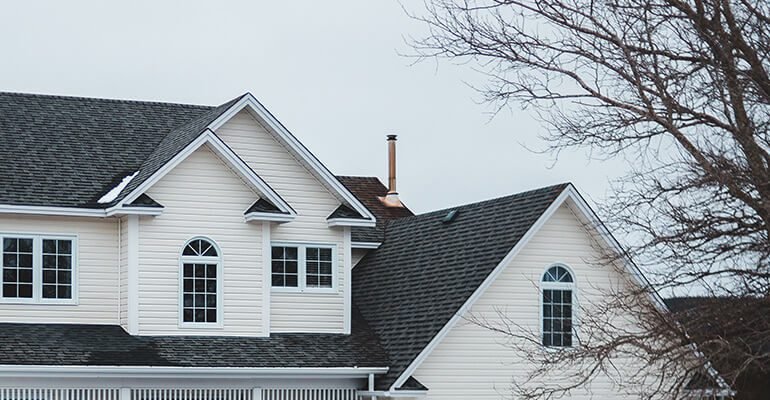All important info
on Flat roofing
Flat roofing systems are a type of roofing system that is used on commercial buildings and some residential properties. They are characterized by a flat or nearly flat surface, as opposed to the pitched or sloping surface of traditional roofs. Flat roofs are typically made from a variety of materials, including asphalt, rubber, and PVC, and require regular maintenance to ensure their longevity.
One of the main advantages of flat roofing systems is their simplicity and cost-effectiveness. They are typically easier and cheaper to install than pitched roofs, and may be a good choice for buildings with large, open spaces or those that are difficult to access. Flat roofs are also relatively easy to maintain and repair, as they have a relatively simple structure with few angles or slopes.
It’s also worth noting that flat roofing systems come in a variety of materials, each with its own set of benefits and drawbacks.
Despite their many benefits, flat roofs do have some limitations. They are not as good at shedding water as pitched roofs, and can be more prone to leaks and water damage if not properly maintained. Flat roofs are also more vulnerable to damage from extreme weather conditions, such as high winds and heavy rain.
To ensure the longevity and performance of a flat roof, it is important to choose a high-quality roofing material and to follow proper installation and maintenance practices. This may include regular inspections, repairs, and cleaning, as well as using protective coatings or membranes to seal and protect the roof.
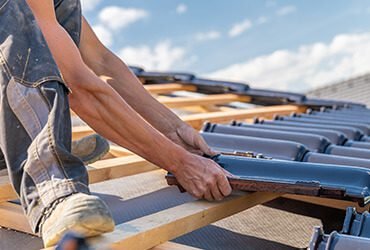

Overall, flat roofing systems can be a practical and cost-effective choice for commercial and residential buildings, provided that they are properly designed, installed, and maintained. By working with a reputable roofing company, you can ensure that your flat roof meets your needs and lasts for many years to come.
It’s important to consider the specific needs and budget of your project when choosing a flat roofing material. A reputable roofing company can help you determine the best material for your needs and provide expert installation and maintenance services.
Installing the new Roofing
Systems by Experts
Installing a new roofing system can be a significant investment, but it is an important aspect of maintaining the integrity and value of your home or business. A new roof can provide improved protection against the elements, enhance the appearance of your property, and increase energy efficiency. In this article, we will discuss the process of installing a new roofing system, including the steps involved and the factors to consider.
Before installing a new roof, it is important to assess the condition of the existing roof. This may involve visually inspecting the roof for signs of damage or wear, such as missing shingles, leaks, or rot, and performing tests to identify any underlying issues. A professional roofing contractor can provide a comprehensive assessment of the roof and recommend the best course of action, whether it be repair or replacement.
Installing a new roofing system is a major undertaking, but it can provide significant benefits for the protection, appearance, and energy efficiency of your home or business.
There are many different types of roofing materials to choose from, including asphalt shingles, metal, tile, and rubber. Each material has its own unique set of benefits and drawbacks, and the right choice will depend on the specific needs and budget of your project.
Before installing a new roof, the roof deck must be prepared to ensure a solid foundation for the new roofing system. This may involve repairing or replacing damaged or rotten decking, adding additional insulation or ventilation, or installing a moisture barrier.


Once the roof deck is prepared, the new roofing material can be installed. This process will vary depending on the type of material being used, but typically involves laying down a base layer of material, such as underlayment or flashing, followed by the top layer of roofing material. It is important to follow proper installation techniques and use the right tools and equipment to ensure a secure and long-lasting roof.
To ensure the longevity and performance of your new roof, it is important to follow a regular maintenance and repair schedule. This may involve cleaning the roof, inspecting for damage, and making repairs as needed. A professional roofing contractor can provide guidance on the appropriate maintenance schedule for your specific roofing material and location.
Importance of Roofplan
Quality Materials
The quality of the materials used in a roofing project can have a significant impact on the overall performance and longevity of the roof. Poor quality materials are more likely to fail or deteriorate over time, resulting in costly repairs or even the need for a complete roof replacement. On the other hand, using high quality materials can ensure that your roof will be able to withstand the elements and provide reliable protection for your home or business.
There are several factors to consider when selecting roofing materials, including durability, weather resistance, and cost. Materials such as asphalt shingles and metal roofing are popular choices due to their durability and ability to withstand extreme weather conditions. However, it is important to consider the specific needs of your roof and choose materials that are suitable for your location and budget.
The quality of the materials used in a roofing project is an important factor to consider. By choosing high quality materials and working with a reputable company like Roofplan, you can ensure that your roof will provide reliable protection and add value to your home or business.
At Roofplan, we take the quality of our materials very seriously. We carefully select only the highest quality materials for our roofing projects, ensuring that our customers can count on their roof to provide reliable protection for years to come. We also offer a variety of materials to choose from, so our customers can find the perfect solution to meet their specific needs and budget.
In addition to using high quality materials, proper installation is also crucial to the performance of a roof. Our team of expert engineers has extensive experience in roof design and installation, and we take great care to ensure that every roof we install is done so correctly and to the highest standards.


In conclusion, the quality of the materials used in a roofing project is extremely important. Choosing high quality materials and ensuring proper installation can help to ensure that your roof will provide reliable protection for your home or business for years to come. At Roofplan, we are committed to using only the best materials and delivering top-notch installation services to our customers.
Investing in high quality roofing materials can also add value to your home or business. A well-maintained roof is an important selling point for potential buyers and can increase the overall value of your property. In addition, using high quality materials can save you money in the long run by reducing the need for costly repairs or replacements.
Roof plan & Insulation
Roof planning and insulation are important considerations when building or renovating a home. The right roof and insulation can help to protect your home from the elements, reduce energy costs, and improve the overall comfort of your home. Here are eight key points to consider when it comes to roof planning and insulation:
The design of your roof will depend on the style of your home and the climate you live in. Factors to consider include the slope and pitch of the roof, the type of materials to be used, and the location of the roof in relation to the sun.
It’s important to understand the warranty options available for your roof and insulation. Some manufacturers offer long-term warranties for their products.
There are many different types of roofing materials available, including asphalt shingles, metal, wood, clay or concrete tiles, and rubber. Each material has its own unique benefits and drawbacks, so it’s important to consider the specific needs of your home when selecting a material.
Proper insulation is essential for a healthy and energy-efficient home. Insulation helps to keep your home warm in the winter and cool in the summer, reducing energy costs and improving comfort. There are several different types of insulation available, including fiberglass, cellulose, and spray foam, each with its own unique properties.


Adequate ventilation is also important for a healthy and energy-efficient home. Proper ventilation helps to regulate the temperature and moisture levels in your attic, preventing issues such as mold, rot, and ice dams. There are several different types of ventilation systems available, including static vents, wind turbines, and ridge vents.
Choosing energy-efficient roofing and insulation materials can help to reduce your energy costs and lower your carbon footprint. Options such as metal roofing and solar panels can help to improve the energy efficiency of your home.
Solar-powered attic fans
Solar-powered attic fans are a type of ventilation system that uses solar panels to generate electricity and power a fan to ventilate the attic. These fans are a popular choice for homeowners looking to improve the energy efficiency of their homes. Here are eight key points to consider when it comes to solar-powered attic fans:
Solar-powered attic fans provide several benefits to homeowners, including improved attic ventilation, reduced energy costs, and increased comfort. Proper ventilation helps to regulate the temperature and moisture levels in your attic, preventing issues such as mold, rot, and ice dams.
Solar-powered attic fans require minimal maintenance, but it’s important to keep them clean and free of debris to ensure optimal performance. This may involve occasionally cleaning the fan and solar panel with a soft brush or cloth.
Solar-powered attic fans are typically easy to install and require minimal maintenance. They can be mounted on the roof or in the gable of the attic and typically come with a solar panel that is mounted on the roof.
Solar-powered attic fans are a highly energy-efficient option for ventilating your attic. They rely on solar panels to generate electricity, which can help to reduce your energy costs and lower your carbon footprint.


The cost of solar-powered attic fans can vary depending on the size and features of the fan. Be sure to shop around and compare prices from multiple retailers to find the best option for your budget.
It’s important to understand the warranty options available for your solar-powered attic fan. Some manufacturers offer long-term warranties for their products, giving you added peace of mind.


